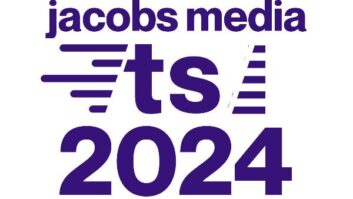
Credit: iStockphoto Much of the discussion and comments to the FCC about AM revitalization have centered on interference and noise. These are serious issues standing in the way of the AM band being once again viable. But are we also missing the third side of the problem triangle, the receiver?
A major problem with AM is the inferior sound delivered to the user. There has been talk about an across-the-board power increase. This would, of course, provide some relief from the noise simply by overpowering it in some cases. But there is a downside to that solution, and it’s a matter of money and questionable overall gain.
Take a simple two-tower AM directional operating at 1 kW.
If granted a power increase to 5 kW, the signal-to-noise on a typical radio might improve, but this would require not only a new transmitter at about $35,000, but a new phasor as well at about $25,000 to handle the additional power, and of course, the tuning units for each tower, and maybe some new coax.
So with labor and engineering fees along with equipment, we are easily talking an investment of close to 100 grand and a much bigger power bill. But the audio will still be telephone-quality in the primary contour of the station— still inferior to all other entertainment audio because of the poor response and audible distortion of the typical AM receiver.
IMMOVABLE
The issue of bandpass for AM radios has been debated for years.
Unless you’re a rather young engineer, you remember all the hooplah over the implementation of the NRSC pre-emphasis and cutoff that was touted as the way to make AM close to FM with an audio response to 9 kHz on the radios that were to be built to complement that curve.
While the NRSC curve became mandatory for transmitters, the receivers never came en masse. And despite the new push for AM improvement, sadly, I think the receiver issue may be the immovable object that stops revitalization in its tracks.
The elephant in the room is IBOC. All of us engineers know that you can’t improve bandwidth and fidelity on AM radios and accommodate AM IBOC at the same time. We are going to have to make a choice.
IBOC on AM is just not cutting it. Can we finally admit that?
The adjacent-channel noise makes it impossible to open the bandwidth of a radio front end. Even the narrow radios of today emit hiss and noise from IBOC operations. Nighttime operation is an even bigger problem, with adjacent-channel skywave service made unlistenable. Yes, a lot of money has been poured into it, but it’s a massive failure. Major 50 kW stations using it report poor receiver lock, even in prime signal areas during the day.
If we are going to make AM viable in the ears of the listener, we are going to have to kill AM IBOC and finally mandate a new receiver standard that requires a reasonably flat audio bandpass of 6 kHz. (Ironically, this is still less than that of a typical car radio in the 1950s!) Optionally, this bandpass could automatically narrow for weak signals.

Larry Langford At one time I was among those who said reducing bandwidth to 6 kHz was blasphemy. But the current allocation plan requires it to fight adjacent-channel interference, and truth be told, 6 kHz sounds very good if the receiver is well-designed. But this will only happen with a rulemaking to mandate acceptable response and distortion.
On the transmission side, the FCC should mandate a maximum negative modulation level of less than 95 percent for AM. Such a limitation would eliminate some distortion issues present in existing transmitters and receivers right away.
The FCC decades ago mandated television standards to force inclusion of UHF tuners as well as FM standards that mandated stereo FM reception. This leveled the playing field and made both UHF TV and FM competitive. It’s time for similar action for AM.
STOP WHINING
Receiver manufacturers need to stop whining about needing narrow operation to fight noise. Most AM listening is done at signal levels above 2 mV/m, plenty of signal to allow wider bandpass without letting in excessive noise. But that can only be true if IBOC is gone. Maybe 100 percent digital is eventually the answer, time will tell; but we can’t have hybrid digital operation and improved quality analog at the same time.
If the FCC is really serious about improvement, they are going to have to “get some stones” to fight the iBiquity lobby, suspend AM hybrid IBOC for now and implement a long-overdue receiver standard that could be applied to new AM radios with a simple change in the chipset used in the receiver front end. Manufacturers need to realize that AM radios don’t need to be built for DX operation where extreme selectivity is required at the expense of sounding good on local stations. Manufacturers will make the change if mandated. Look how fast the expanded band was implemented on AM receivers years ago, and no one complained about any cost increase, because there was none.
If we don’t make changes that result in drastic improvement to the actual listening experience of the end user, we are just fooling ourselves on revitalization. And the only way to be that drastic on the current AM band is to improve the noise floor and the high-end response and distortion to at least be in the ballpark of other media.
You can get rid of all the noise and interference, change contour protection and increase power levels, but if what comes out is still rolling off at 2 kHz, you will never make a dent against FM and iPods. It’s really just that simple.
Larry Langford is owner and chief engineer of WGTO(AM) and W266BS Cassopolis, Mich. Reach him at[email protected]or wgtoradio.com.
Comment on this or any story to[email protected].












